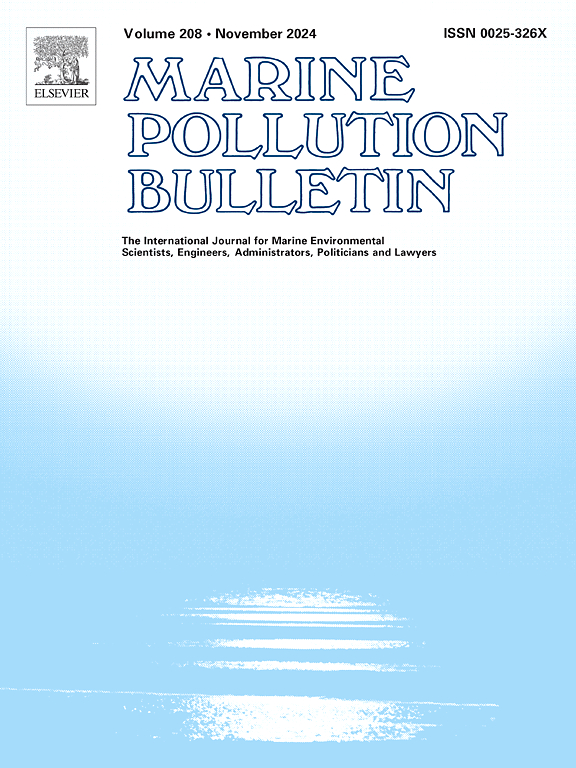Integrated machine learning-based optimization framework for surface water quality index comparing coastal and non-coastal cases of Guangxi, China
IF 4.9
3区 环境科学与生态学
Q1 ENVIRONMENTAL SCIENCES
引用次数: 0
Abstract
In this study, an optimized comprehensive water quality index (WQI) model framework is developed, which combines advanced machine learning technology to compare different types of surface water quality assessment. The proposed framework enhancement encompasses four critical methodological advancements, i.e., water quality parameter selection, parameter normalization, weighting determination, and WQI aggregation function comparison. The Random Forest (RF) machine learning algorithm ranks water quality parameters based on their relative importance in determining overall water quality regimes. The water quality parameter weightings were determined using the Rank Order Centroid (ROC) method. The parameter normalization was designed following national standards by transforming observation data into dimensionless values on a unified scale and comparing the sensitivity and prediction error of four distinct WQI models. Multiple Linear Regression (MLR) models were employed to assess the sensitivity and precision of the WQI model. A comparison case study was conducted in China's typical coastal and non-coastal regions, i.e., Guangxi Zhuang Autonomous Region (Guangxi), to verify the robustness and adaptability of WQI model performance. The results show that the overall water quality status in Guangxi was generally in “Good” or “Medium” level. There was significant spatial water quality heterogeneity in the river systems of Guangxi, and the non-coastal region showed better water quality, almost at a “Good” level compared to the coastal region. The weighted quadratic mean (WQM) and the unweighted root mean square (RMS) models were selected as the most suitable WQI models for water quality evaluation in coastal and non-coastal regions in Guangxi. The water quality in the coastal region was almost “Medium”, with the average WQIs of WQM and RMS models being 74.27 and 76.51, respectively. The average WQIs evaluated by WQM and RMS models in non-coastal region were 85.39 and 88.81, respectively. This study can provide a valuable and reliable scientific reference for future administrative bodies implementing effective water environment risk prevention and management measures.

基于机器学习的广西沿海与非沿海地表水水质指数综合优化框架
本文结合先进的机器学习技术,构建了一种优化的综合水质指数(WQI)模型框架,对不同类型的地表水水质评价进行了比较。提出的框架增强包括四个关键的方法进步,即水质参数选择,参数归一化,权重确定和WQI聚集函数比较。随机森林(RF)机器学习算法根据水质参数在确定整体水质制度中的相对重要性对其进行排名。采用秩序质心(ROC)法确定水质参数权重。根据国家标准,将观测数据转化为统一尺度的无量纲值,比较4种不同WQI模型的灵敏度和预测误差,设计参数归一化。采用多元线性回归(MLR)模型评价WQI模型的灵敏度和精度。通过对中国典型沿海地区和非沿海地区,即广西壮族自治区(广西)的对比案例研究,验证WQI模型性能的鲁棒性和适应性。结果表明,广西整体水质状况总体处于“良好”或“中等”水平。广西各水系水质空间异质性显著,非沿海区水质较好,基本处于“良好”水平。选择加权二次平均(WQM)和非加权均方根(RMS)模型作为最适合广西沿海和非沿海地区水质评价的WQI模型。沿海地区水质基本为“中等”,WQM模型和RMS模型的平均WQIs分别为74.27和76.51。非沿海地区WQM和RMS模型评价的平均WQIs分别为85.39和88.81。本研究可为今后行政管理机关实施有效的水环境风险防范和管理措施提供有价值的、可靠的科学参考。
本文章由计算机程序翻译,如有差异,请以英文原文为准。
求助全文
约1分钟内获得全文
求助全文
来源期刊

Marine pollution bulletin
环境科学-海洋与淡水生物学
CiteScore
10.20
自引率
15.50%
发文量
1077
审稿时长
68 days
期刊介绍:
Marine Pollution Bulletin is concerned with the rational use of maritime and marine resources in estuaries, the seas and oceans, as well as with documenting marine pollution and introducing new forms of measurement and analysis. A wide range of topics are discussed as news, comment, reviews and research reports, not only on effluent disposal and pollution control, but also on the management, economic aspects and protection of the marine environment in general.
 求助内容:
求助内容: 应助结果提醒方式:
应助结果提醒方式:


